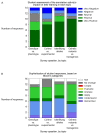Student Annotations of Published Data as a Collaboration between an Online Laboratory Course and the C. elegans Database, WormBase
- PMID: 33884078
- PMCID: PMC8012049
- DOI: 10.1128/jmbe.v22i1.2331
Student Annotations of Published Data as a Collaboration between an Online Laboratory Course and the C. elegans Database, WormBase
Abstract
Course-based undergraduate research experiences (CUREs) provide the same benefits as individual, mentored faculty research while expanding the availability of research opportunities. One important aspect of CUREs is students' engagement in collaboration. The shift to online learning during the COVID-19 pandemic created an immediate need for meaningful, collaborative experiences in CUREs. We developed a partnership with the Caenorhabditis elegans (C. elegans) database, WormBase, in which students submitted annotations of published manuscripts to the website. Due to the stress on students during this time of crisis, qualitative data were collected in lieu of quantitative pre- and postanalyses. Most students reported on cognitive processes that represent mid-level Bloom's categories. By partnering with WormBase, students gained insight into the scientific community and contributed as community members. We describe possible modifications for future courses, potential expansion of the WormBase collaboration, and future directions for quantitative analysis.
©2021 Author(s). Published by the American Society for Microbiology.
Figures



References
-
- Dolan E. Course-based undergraduate research experiences: current knowledge and future directions. National Research Council; Washington, DC: 2016.
-
- Auchincloss LC, Laursen SL, Branchaw JL, Eagan K, Graham M, Hanauer DI, Lawrie G, McLinn CM, Pelaez N, Rowland S, Towns M, Trautmann NM, Varma-Nelson P, Weston TJ, Dolan EL. Assessment of course-based undergraduate research experiences: a meeting report. CBE Life Sci Educ. 2014;13:29–40. doi: 10.1187/cbe.14-01-0004. - DOI - PMC - PubMed
LinkOut - more resources
Full Text Sources
Other Literature Sources
